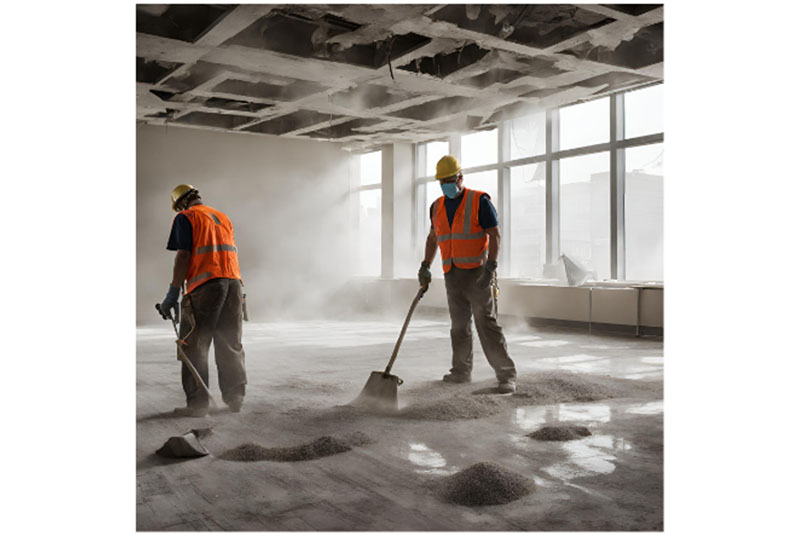Renovation and construction projects are essential for revitalizing commercial spaces, but they often come with an unwelcome guest: dust and debris. Managing this byproduct is crucial not only for the success of the project but also for maintaining a safe and productive environment. In this blog, we will explore the negative effects of renovation dust and debris and how to effectively control them using temporary construction barriers and dust containment systems.
Why to Control Renovation Dust and Debris
- Health Concerns: Renovation dust can contain harmful substances like asbestos, lead, or silica. Exposure to these particles can lead to severe health issues, including respiratory problems and long-term illnesses.
- Occupant Discomfort: Excessive dust and debris can disrupt the daily routines of employees, tenants, or customers in the renovation area, causing discomfort and annoyance.
- Equipment Damage: Dust can infiltrate and damage sensitive equipment, including computers, servers, and manufacturing machinery. The repair or replacement of such equipment can be costly.
- Fire Hazards: Fine dust particles can pose a fire hazard in construction and renovation sites. They can ignite if exposed to sparks or flames, increasing the risk of accidents.
- Property Damage: Dust settling on surfaces can cause property damage, including staining and deterioration of finishes and materials. This can lead to additional repair costs.
How to Control Renovation Dust and Debris
- Use Temporary Construction Barriers: Installing temporary construction barriers is the first line of defense against dust and debris. These barriers create a physical separation between the construction zone and the occupied area. They are highly effective in containing particles within the work area.
- Implement a Dust Containment System: Dust containment systems, such as those we offer, provide a comprehensive solution for managing renovation dust. These systems include modular panels and accessories designed to create an airtight enclosure around the construction site. This prevents dust from spreading beyond the containment area.
- Regular Cleaning and Maintenance: Implement a strict cleaning regimen within the construction zone to minimize dust generation. Regularly cleaning surfaces, equipment, and tools can help control the spread of particles.
- Air Filtration: Use air filtration machines within the containment area to capture and filter out airborne dust. These machines help maintain air quality within the construction zone.
- Adopt Best Practices: Train workers on best practices for dust control, including using wet methods to reduce dust when cutting or grinding materials. Encourage the use of personal protective equipment (PPE) to minimize exposure.
- Communication: Clearly communicate the renovation process and expected disruptions to occupants and stakeholders. Managing expectations can help reduce frustration.
- Testing and Monitoring: Periodically test and monitor dust levels to ensure that control measures are effective. Adjust containment systems and cleaning practices as needed.
Controlling renovation dust and debris is essential to protect the health and well-being of occupants, prevent property damage, and maintain a productive work environment. Utilizing temporary construction barriers and dust containment systems is a proactive approach to effectively manage these challenges, ensuring that the renovation process proceeds smoothly and safely.

